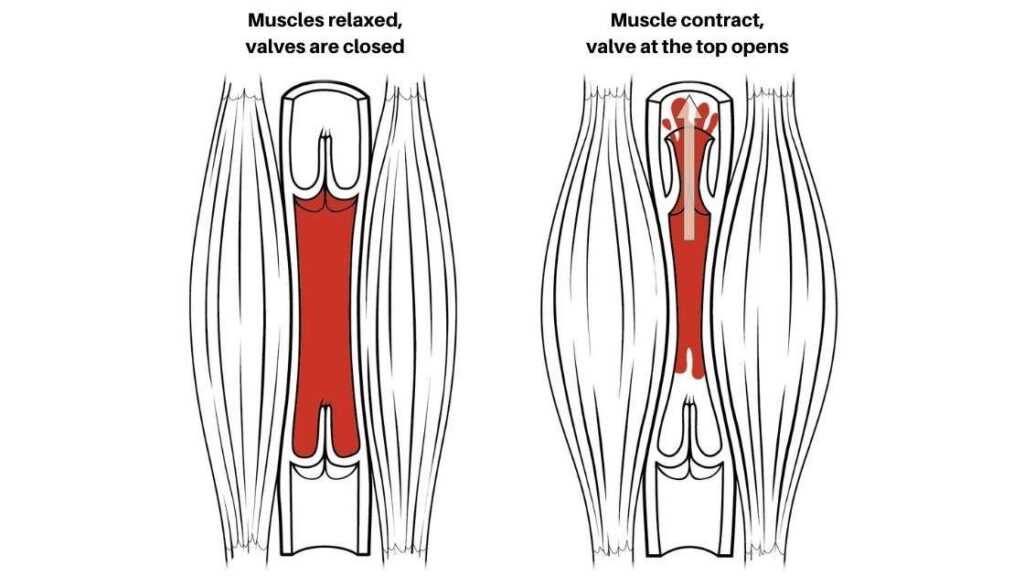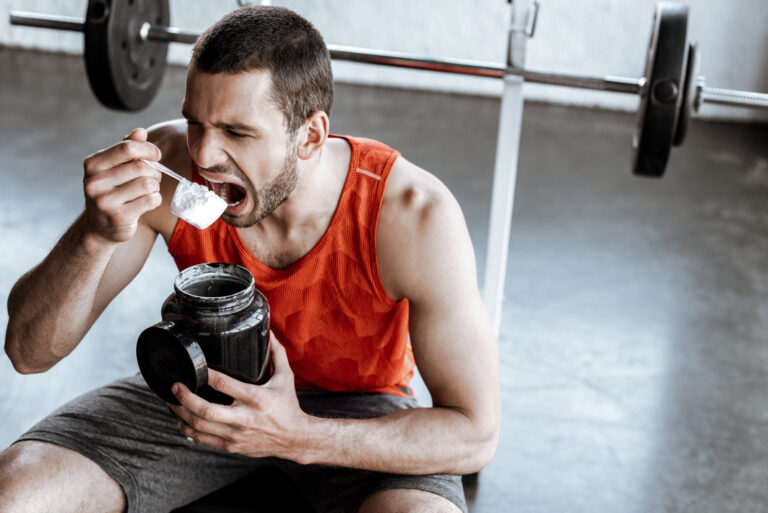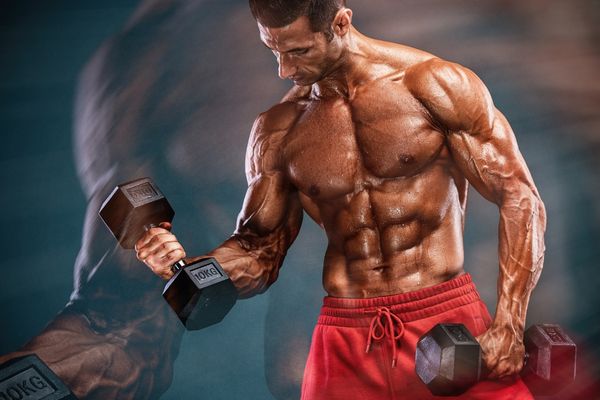Let’s first understand, what is muscle contraction. Muscle contraction is the tightening, shortening, or lengthening of muscles when you do some activity. It can happen when you hold or pick up something, or when you stretch or exercise with weights. Muscle contraction is often followed by muscle relaxation, when contracted muscles return to their normal state.

We all know that during exercise, especially intense exercise, our heart rate increases and the blood is pumped at a much greater rate around the body, than normal. This increased blood flow, delivers oxygen, glycogen, amino acids, testosterone, growth hormone, IGF-1 to these working/starving muscles.
Also, the blood flow helps remove waste products from our muscles, during exercise. When our muscles contract, there are a lot of waste by products which accumulate in the muscles, for e.g. lactic acid. And these waste products, that pool in the muscles, have to be removed, or they can hinder performance causing muscles to fail.
An example of this is the build-up of hydrogen ions that we refer to as ‘lactic acid build-up’. Blood needs to deliver carnosine to help buffer these hydrogen ions and bring the muscle pH back down to more normal levels.
This is why performing muscles will see an increased flow of blood to them as it delivers oxygen rich red blood cells to the starving muscles. This accelerates the rate at which your system is able to cleanse itself of these waste by products (such as ammonia) as well as other nutrients needed, whilst helping remove the unwanted by products. Increased blood flow also helps to improve muscular efficiency of ATP production in the mitochondria, therefore reducing the oxygen cost of exercise.
When we talk about the ‘pump’, during exercise, it is the increase in muscle size, during exercise, especially during weight training. It is these waste products, which actually are responsible for the pump. The scientific term for a muscle pump is “hyperemia,” which means the increase of blood flow to muscles of the body.
As you lift weights, the blood flow increases in the muscles, causing your muscles to expand. Second, these by products also draw or pull water into your muscles, thus increasing their size. And, third, as the muscle size grows, it puts pressure on the blood vessels inside the muscles, reducing the quantity of blood that can escape.
We need to understand that, when the muscles are relaxed, it is easier for the blood to enter and escape. But when the muscles contract, the blood vessels and veins squeeze, making it harder for the blood to leave the muscle.
In simple terms, during intense muscular contractions, the veins taking blood out of working muscles are compressed, whereas arteries continue to deliver blood into the working muscles, thereby creating an increased concentration of intramuscular blood.

The net effect is that the blood gets pooled in the muscle, thus resulting in the famed ‘pump’, which remains for some time post workout, before the blood eventually leaves the muscles, thus diminishing the pump.
That’s why, when you finish the workout, and are proudly carrying the pump, it slowly goes off, making a lot of novices doubt their training, and their genetics.
Also, greater the intensity of the workout, greater will be the amount of waste products accumulation, and greater would be the pump.
The pump may last app. 2-3hrs post a workout. This may vary depending on your genetics, nutrition, and of course your genetics. Higher the intensity of the workout, greater the pump. Similarly, certain supplements like NO boosters, for e.g. arginine & citrulline, help in increasing the pump duration, as their primary role is to increase the blood flow in the muscles.
But we need to understand that a pump is temporary cellular swelling, which lasts for a few hours. Long term hypertrophy is different.
However, a good pump simply means, that your workout intensity has been good, which is directly linked to increased strength & hypertrophy in the long run.
When the muscle is pumped up beyond its normal size, pumps can also enhance muscle growth by way of fascial stretching. When the fascial tissue is stretched, room for more muscle growth is made available. Over time, the pump can also result in a greater number of capillaries in muscle tissue, which means they can provide the muscles with more nutrients and oxygen for even bigger pumps and more growth long-term.
Also, latest studies have shown a positive link between muscle swelling (pump) and muscle hypertrophy. A 2022 study, determined the relationship between muscle swelling immediately after the first session of resistance training and muscle hypertrophy after a 6-week resistance training (RT). For the study, 22 young men performed knee extension resistance exercise consisting of 3 sets with 8 repetitions at a load of 80% of one repetition maximum for 6 weeks (3 days/wk).
A significant increase in muscle thickness was observed immediately after the first session of RT. After the 6-week RT, muscle thickness increased significantly. A significant positive correlation was found between muscle swelling and muscle hypertrophy. This study suggests that the greater the muscle swelling immediately after the first session of RT, the greater the muscle hypertrophy after RT.
Studies have also shown that, cell swelling acts as a physiological regulator of cell function, stimulating protein accretion by both increasing protein synthesis and decreasing protein breakdown.
Though a good pump is always motivating, as it increases aesthetic looks, and provide a sense of accomplishment & satisfaction. The feeling of tightness and fullness in the muscle is a sign of a good workout. It also helps in maintaining motivation for future sessions. This is true specially for the novices.
But, as you mature in lifting, your focus on pump will automatically diminish, and your aim should be to focus on progressive overload and building strength in the gym. Pump will automatically occur.
Focussing on moderate weight & higher rep training, with less rest between sets, or heavier weights and low to moderate reps, results in a better pump. Adding drops sets, super sets, eccentric training, rest-pause, BFR training etc. all help in enhancing the pump.



